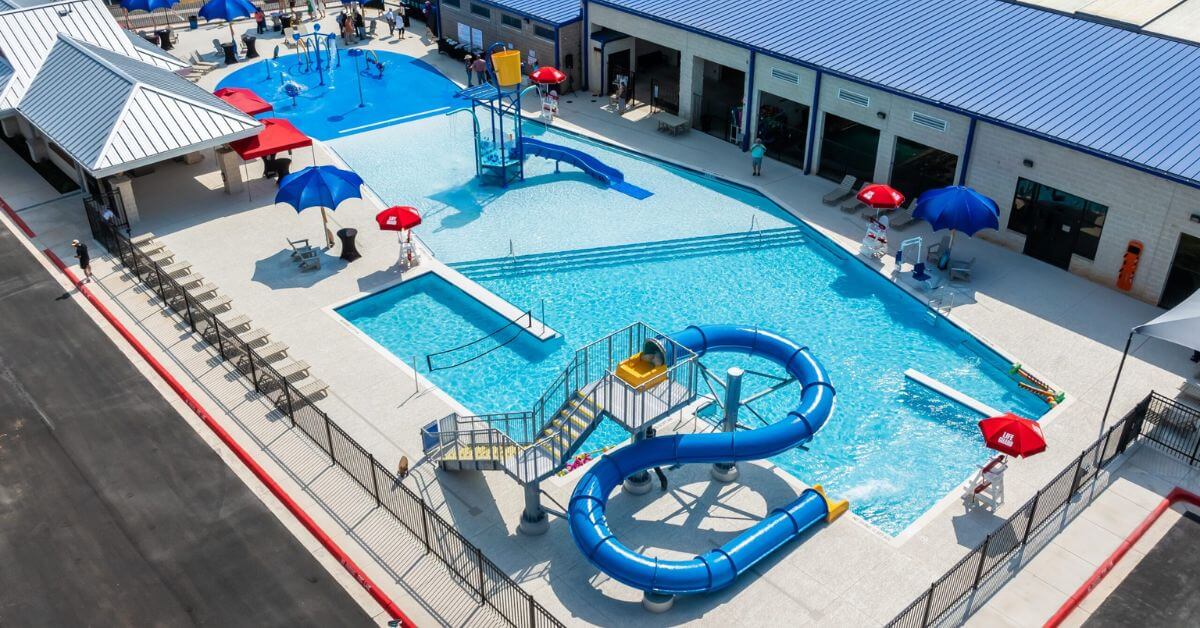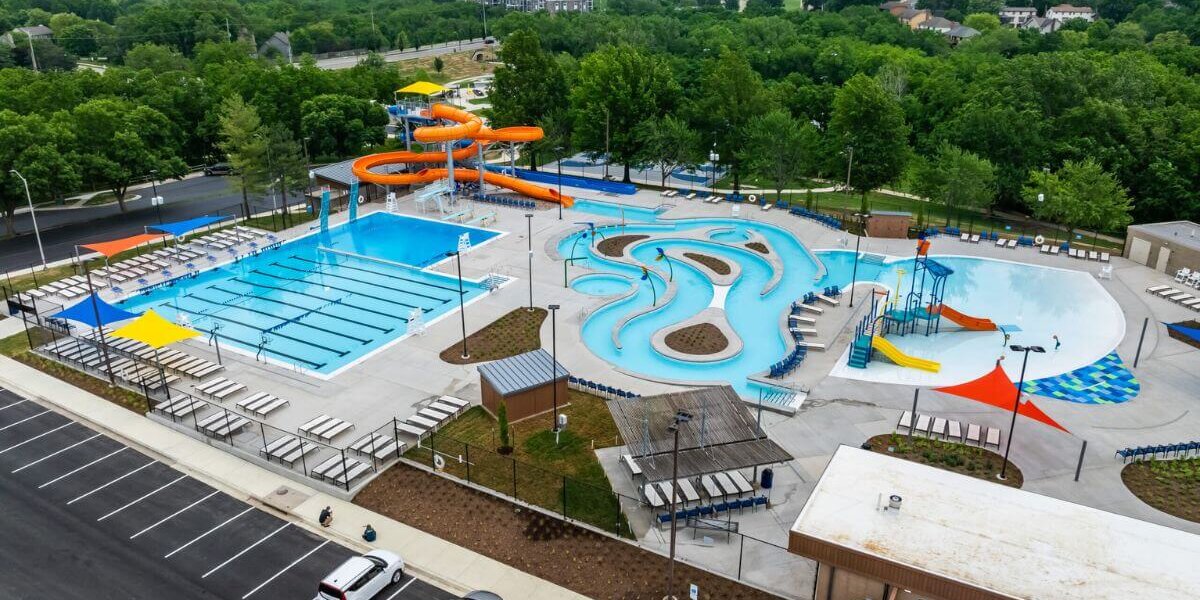Commercial pool development is a complex process that requires a careful balance of creativity, technical expertise, and strategic planning. These large-scale projects must meet a wide range of demands, from enhancing public recreational spaces and accommodating competitive swimming to serving as a centerpiece for resorts or luxury facilities.
Achieving successful results requires overcoming key challenges, such as regulatory compliance, budget constraints, environmental considerations, and the evolving needs of users. Each phase of the project, from initial design and construction to long-term maintenance, presents opportunities for innovation but also potential pitfalls that can derail progress and escalate costs.
Understanding the top challenges in commercial pool development and adopting a proactive, solutions-based approach are essential to delivering a space that offers high functionality and enduring appeal. Learn everything you need to know in this informative guide.
Site Selection and Preparation
Choosing the right location for the pool is one of the first critical decisions for positive results. The site must be accessible to the intended audience and comply with zoning regulations established by local authorities. It should also have sufficient space to comfortably accommodate the pool and its surrounding amenities.
Preparation of the selected site can be complex due to factors like soil stability and topography. Unsuitable ground conditions can lead to subsidence or leakage issues later, resulting in expensive repairs. Proper environmental assessments can help you avoid these long-term challenges.
Regulatory and Safety Standards
Commercial pools must adhere to stringent safety and health regulations to protect users and staff. These include compliance with rules governing water quality, drainage, and accessibility for individuals with disabilities. Failure to meet these regulations can result in legal issues and fines that could damage your business.
Navigating regulations requires attention to detail and thorough documentation during the swimming pool construction process. Hiring expert contractors familiar with local codes will help you successfully meet these standards, as will staying ahead of regulatory changes.
Design Complexity and Customization
 Balancing aesthetics, functionality, and regulatory compliance during the design phase is a challenging process. Commercial pools often have unique features, such as infinity edges, splash pads, or wave pools, which add layers of complexity. Collaborating with experienced designers is important in this phase to achieve safe, functional results.
Balancing aesthetics, functionality, and regulatory compliance during the design phase is a challenging process. Commercial pools often have unique features, such as infinity edges, splash pads, or wave pools, which add layers of complexity. Collaborating with experienced designers is important in this phase to achieve safe, functional results.
Developers may have to accommodate additional needs, including specialized lighting, acoustic considerations, or specific environmental elements. These requirements can increase design time and costs. Keeping the long-term usability of the pool in mind provides guidance for smart decision-making.
Budget Constraints and Cost Overruns
Developing a commercial pool can be excessively expensive without careful cost management. Unforeseen expenses, such as repairing utility infrastructure or upgrading filtration systems, can quickly add to the costs. Setting a comprehensive budget with contingency funds helps mitigate these risks.
Overrun expenses often arise from poor planning or delays in approvals and permits. Working with professional swimming pool contractors ensures cost-effective solutions and access to efficient construction practices. Contractor expertise reduces the risk of financial surprises during the project lifecycle.
Engineering and Structural Challenges
The structural integrity of a commercial pool must meet high standards for safety and longevity. Weak foundations or improper sealing can compromise operations and user experiences. Professional engineers must address these challenges during the construction phase to avoid performance issues later.
Structural challenges can also arise due to environmental factors influencing the pool’s materials. Salinity, extreme weather conditions, or frequent pool use may contribute to damage like erosion or cracking. Proactive measures and the use of high-quality materials can effectively combat these issues.
Water Treatment and Filtration Requirements
 Maintaining clean, safe water is vital in commercially operated pools. This includes:
Maintaining clean, safe water is vital in commercially operated pools. This includes:
- Advanced filtration processes: Modern water treatment systems use state-of-the-art filtration methods to remove debris, bacteria, and harmful chemicals and contaminants effectively for higher water safety and quality.
- Usage demands assessment: Selecting the appropriate filtration system requires a thorough understanding of usage requirements, including volume, quality standards, and specific contaminants targeted for removal.
- Operational reliability: Reliable infrastructure and components in water management systems are essential for maintaining consistent treatment outcomes and reducing downtime.
- Continuous monitoring: Regular water quality monitoring is a fundamental requirement for maintaining consistent standards. This includes testing for physical, chemical, and biological parameters to quickly identify and address deviations from compliance.
- Public health compliance: Proper water treatment safeguards public health by preventing the spread of waterborne diseases and complying with local, national, and international health regulations.
Material Availability
One of the most common challenges in commercial pool development to achieve a successful operation is the availability of materials. Factors such as supply chain disruptions, locating high-quality and durable materials, and the cost variability of raw materials can impact project timelines and budgets.
Professional developers should source high-quality, durable materials from reliable suppliers so their projects meet safety and performance standards. The industry connections of these suppliers can help developers secure materials, even during supply chain disruptions, mitigating delays and cost overruns.
Energy Efficiency and Sustainability
Energy efficiency in commercial pool facilities is achievable through energy-saving technologies and environmentally friendly practices. Incorporating energy-efficient pumps, advanced insulation materials, and automated systems for water management reduces energy consumption while maintaining optimal performance.
Sustainable and quality construction materials are integral to environmentally responsible pool construction. Materials such as recycled steel, eco-friendly concrete alternatives, and sustainably harvested wood reduce the carbon footprint generated during the building process for greater durability and long-term performance. The use of high-quality tiles and finishes made from recycled or upcycled materials further enhances sustainability while maintaining aesthetic appeal.
Weather and Environmental Impacts
Weather conditions such as heavy rainfall, freezing winters, or high temperatures add to maintenance costs and complexity. Pools in such climates require specialized construction methods to mitigate environmental wear and tear.
Environmental challenges may also include exposure to pollutants from nearby industrial or urban areas. Thorough testing and preventive measures guard against degradation, and regular inspections identify and address environmental impacts early on.
Workforce Training and Management
Even with state-of-the-art equipment, commercial swimming pools require trained professionals to oversee daily operations. Lifeguards, maintenance crews, and operational managers must receive regular training to uphold safety and quality standards.
Mismanagement or a lack of skilled staff can lead to operational failures and even accidents. Streamlined hiring processes and ongoing education programs will help you build a well-qualified team. Prioritizing workforce development directly correlates with the success of a commercial pool facility.
The development of commercial pools comes with a unique set of challenges, from complying with stringent safety and health regulations to managing operational costs and environmental impacts. Balancing the diverse needs of users while maintaining profitability requires strategic planning, innovative solutions, and a strong focus on community engagement.
























